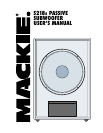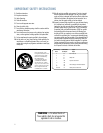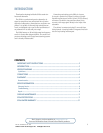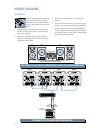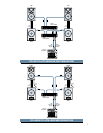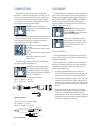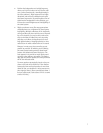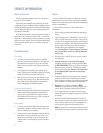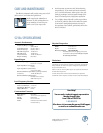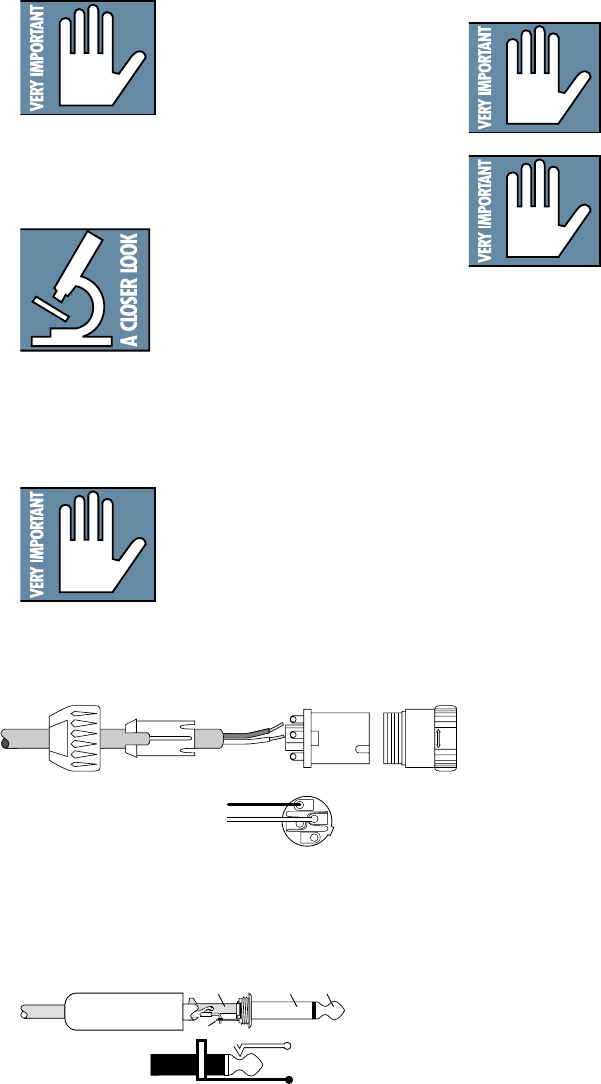
6
CONNECTIONS
The S218s has two connectors. One is a Neutrik
Speakon™ connector and the other is a female 1/4" TS
connector. These connectors are wired in parallel, and
can be used either as an input from a power amplifi er,
or as a “thru” connection for connecting the full-range
input signal to another speaker’s input.
NEVER connect more than one
output from a power amplifi er to the
S218s inputs.
Keep in mind, when connecting two or more speakers
in parallel using the “thru” connections, that you want
to be sure not to go below the minimum impedance
requirements for your power amplifi er.
The S218s has a nominal impedance
of 8 ohms.
Two 8 ohm cabinets in parallel equals
4 ohms.
Three 8 ohm cabinets in parallel equals
2.7 ohms.
Four 8 ohm cabinets in parallel
equals 2 ohms.
Use high-quality speaker cable as recommended by
the power amplifi er manufacturer.
DO NOT use coaxial shielded cable
like a guitar cord to make speaker
connections. They are not designed
to handle the high currents required
to drive a loudspeaker.
The Speakon connector is wired as follows:
Pin 1+ = Signal (“+” or hot)
Pin 1– = Ground (“–” or cold)
PLACEMENT
The S218s subwoofer is designed to sit on the fl oor or
stage. A socket is provided on the top of the cabinet for
mounting another speaker on top of the S218s, like the
Mackie S215, SA1521z, SR1521z, SRM350, or SRM450
speakers. Use the optional Mackie speaker mount-
ing pole (SPM100) to mount them on the S218s (see
Hookup Diagrams on page 5).
WARNING: The cabinet has no rig-
ging points and is not suitable for
rigging. NEVER attempt to suspend
the S218s by its handles.
As with any powered components,
protect them from moisture. If you
are setting them up outdoors, make
sure they are under cov er if you
expect rain.
Room Acoustics
The S218s subwoofers are designed to sound as neu-
tral as possible; that is, to reproduce the input signal as
accurately as possible.
Room acoustics play a crucial role in the overall per-
formance of a sound system. Here are some additional
placement tips to help overcome some typical room
problems that might arise:
• Avoid placing loudspeakers in the corners of a
room. This increases the low frequency output and
can cause the sound to be muddy and indistinct.
• Avoid placing loudspeakers against a wall. This, too,
increases the low frequency output, though not as
much as corner placement. However, if you do need
to reinforce the low frequencies, this is a good way
to do it.
• Avoid placing the speakers directly on a hollow
stage fl oor. A hollow stage can resonate at certain
frequencies, causing peaks and dips in the fre-
quency response of the room. It’s better to place the
loudspeakers on a sturdy table or stand designed to
handle the weight of the cabinet(s).
COLD
HOT
1+
1+
1–
1–
2–
2+
SLEEVE
TIP
TIP
SLEEVE
TIP
SLEEVE
Speakon Connectors
The 1/4" TS jack is wired as follows:
Tip = Signal (“+” or hot)
Sleeve = Ground (“–” or cold)
1/4" TS Connectors



